Beit Al Mamlouka Hotel, Damascus
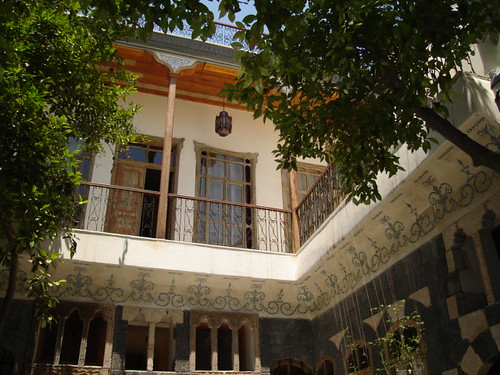
On a recent tour of old Damascus, I happened to visit the “Beit Al Mamlouka” hotel, located in the heart of Old Damascus, Bab Touma. The hotel dates back to the 17th century and combines a mixture of Mamlouk and Ottoman influence.
“Al Mamlouka” in Arabic means “the possessed”.
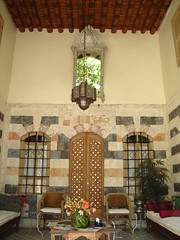
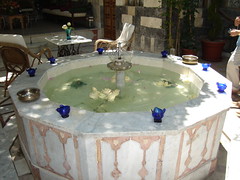
The Liwan(Inner Patio)& Fountain
The hotel was previously a home to a Syrian family and was in a very bad shape. It’s current owner undertook the daunting task of restoring it to it’s previous glory, maintaining all of the house’s original design, and turned it to a 9 bedroom hotel.
There are 5 hotels such as this in Aleppo, but this is the only one of its kind in Damascus.
Each hotel room has a unique design as well as it’s own special name such as the “Suleiman the Magnificant” suite, the “ Antar&Abla” room, and the “Abu Firas Al Hamadani” restaurant and bar.
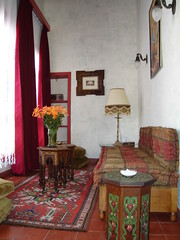
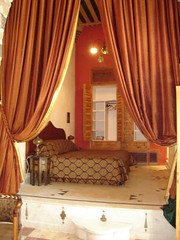
Suite Ibn Sina - living room&Suite Baybars - Bedroom
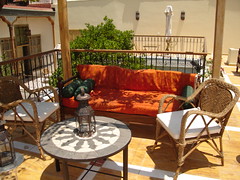
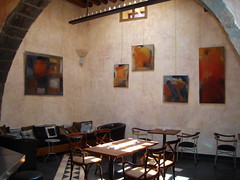
The Terrace& Abu Firas Al Hamadani restaurant
What I liked most about this hotel were the little touches displayed here and there and the attention to detail, such as the verses of poems written on the wall above the bar, the well in the courtyard, and the beautifully decorated ceilings.
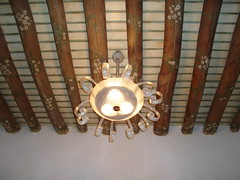
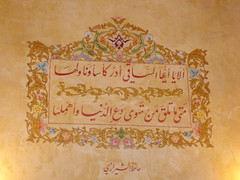
Beautiful wooden ceiling, Poem verses by Hafez Al Shirazi located above the bar
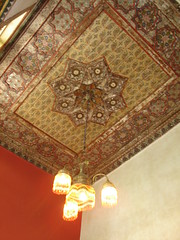
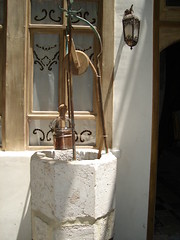
Decorated ceiling of the Baybars suite, well in the courtyard(Ared Diyar)
I also learned a few interesting facts about old Arabic houses. Here are some:
-Apparently, people in old times used to turn on the Bahra(fountain) when they were discussing something private or of importance to drown out their voices so that no one could hear what they were actually saying.
-People in old times used to heat using charcoal stoves, and this emitted high levels of carbon dioxide, that’s why most rooms in Arabic houses had one wall built and layered in a special way with wood and other materials then covered with whitewash to absorb these toxic fumes.
Technorati Tags:Al Mamlouka, Hotel, Arabic House









